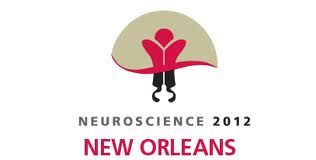Stress
The Damaging Impact of Abuse on Brain Development
The Damaging Impact of Abuse on Brain Development
Posted October 13, 2012

Some 30,000 neuroscientists have converged on the New Orleans convention center, a stone's throw from the French Quarter and overlooking the Mississippi river as it flows into the Gulf. Just as the river always flows downstream, science flows forward toward new understanding and nowhere is it more evident than here. I'm at the annual Society for Neuroscience (SfN) conference, which starts today and ends Wednesday. Each day there are thousands of poster presentations and hundreds of talks, each documenting a new finding about the brain, new evidence for the theories explaining how our collection of neurons works, and what it means for us.
This year, SfN selected this blog to document the findings in cognition, behavior and disorders of the nervous system. I am responsible for posting one blog entry per day of the conference. There's so much to choose from here, but I start with a topic that I've been interested in for the past few years, one that was the focus of my dissertation: how experience shapes our behavior and the way our brain functions throughout our life.
After you're born, the greatest impact on the brain you'll have as an adult comes from the experiences you have in the first years of your life. At its best, the right learning opportunities and a nurturing childhood can give the basis for a healthy, happy adult. On the other end, stress and trauma during development, such as that endured during physical abuse or lack of parental involvement, can have lasting negative outcomes.
This afternoon at SfN, Jamie Hanson from the University of Wisconsin presented work looking at brain development and behavioral outcomes of children who experienced stress in their early years. He found that orphaned children and physically abused children had smaller amygdala and hippocampi at age 12 than children without a history of stress. Those with the smallest amygdala and hippocampi also had the most behavioral problems, like getting in fights or skipping school.
Hanson assessed the size of amygdala and hippocampus using MRI and then measured the volume of both structures in each of the children studied. The amygdala, involved in emotion and decision making, has been implicated as an important region for regulating aggressive behavior. Smaller volume in the amygdala may explain the increased risk abused children have for behavior problems. The hippocampus, also involved in emotional processing, is also crucial for memory formation. Smaller hippocampi in abused children could present a hurdle for learning and making progress in school for children exposed to stress.
Psychiatrists have hypothesized since the 50s and 60s that abused children may be more likely to grow up to have behavioral problems, including aggression and violence. Longitudinal studies following children who were abused and neglected as children showed that these traumatic experiences increase the risk for criminal behavior and a host of other negative outcomes, including depression, drug abuse, post traumatic stress disorder and also develop physical health outcomes like heart disease and diabetes.
What was less clear is how abuse increased the risk of behavioral problems. Research over the past 20 years suggests that the physical outcomes of abuse and neglect may relate to behavioral and psychiatric outcomes. High levels of stress may cause release of chemicals, including toxic levels of cortisol. Cortisol may disrupt brain development and alter the physical structure of emotional brain regions, such as the hippocampus and amygdala.
Given the troubling outlook for abused or neglected children, what can be done to help?
Another presenter at SfN, Dario Maestripieri, has studied abusive parenting in rhesus monkeys. His studies on primates in captivity and in the wild suggest that about 5 percent of mothers are bad parents, ignoring or rejecting their offspring, excessively hitting them, and sometimes injuring them until they die. Some mothers kill all of their brood.
He has found that in general, monkeys who were abused by their mothers are more likely to be abusive parents themselves. However, experiencing abuse did not always lead a monkey to abuse its babies. Only about half of abused monkeys went on to commit the same bad parenting, but the other half rose above their own upbringing and raised their own offspring with tenderness and care.
What differences might protect some monkeys, allowing them to be better mothers?
On average, Maestripieri has found lower levels of serotonin in abused monkeys. However, the abused monkeys with the highest levels of serotonin—levels more like their unabused peers—were least likely to abuse their own offspring. Experiencing abuse without developing serotonin deficits might buffer these monkeys from the worst effects of abuse.
So although abused children have a range of negative outcomes, evident from Hanson's work showing smaller amygdala and hippocampi in abused children, there may be hope that these outcomes can be curbed. Higher serotonin levels may prevent the worst outcome of abuse—passing it on to the next generation.
Do you have any thoughts about this research or questions about it? Please share in the comments. I'd love to hear what you think.




